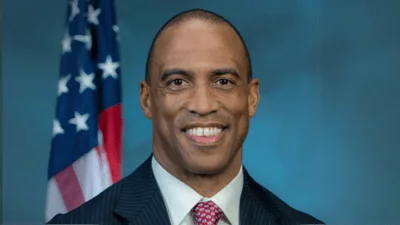This story first appeared on the University of Georgia website.
Percy Hunter Stone, Georgia’s first Black 4-H state leader in the era of segregation, was inducted into the National 4-H Hall of Fame on Oct. 7, 2022, in Washington, D.C. Stone led the organization formerly known as the Negro 4-H Club. He was recognized for his unwavering dedication to creating equal opportunities for all 4-H’ers.
Stone is credited with the establishment of Dublin 4-H Center, opened as the first state center for Black 4-H’ers in the U.S. in 1957. The center was recently named to the National Register of Historic Places by the National Park Service.
Born in Virginia in 1893, Stone earned an undergraduate degree from Hampton Institute, now Hampton University, before moving to Georgia in 1919 to begin his career as a Cooperative Extension agent in Clarke County. Four years later, he was transferred to Savannah to assume the role of state leader of the Negro 4-H Club.
Upon his arrival in Savannah, Stone began working to remove barriers preventing Black students from participating in 4-H. He strengthened all facets of 4-H programming by incorporating more organization to the club’s framework, including expanded leadership training for members and greater incentives for competing in judging, exhibits, project production and record books.
As membership steadily increased, Stone and his state staff decided to consolidate the girls’ and boys’ programs. The first State Federation for Negro 4-H Club Boys and Girls was established in August 1933 at Georgia State Industrial College, now Savannah State University. An equal number of boys and girls were elected to fill the officer positions.
Stone is credited with nurturing the support of the Savannah business community for 4-H, believing that “the community is the basis of club organization.” Mills Bee Lane Jr., a young Savannah banker, began sponsoring the Negro 4-H Calf Clubs in 1936 by financing 26 steers for participants. Other businesses followed suit and opportunities for Black 4-H’ers continued to improve.
Camping became Stone’s next priority. Black Extension agents dreamed of a centrally located 4-H facility that would be controlled by the Cooperative Extension Service, similar to Camp Wilkins, Camp Wahsega and Camp Fulton, which were available to white 4-H members. In 1939, he assisted with the acquisition of property in Laurens County to begin construction of the Dublin 4-H Center.
World War II and its aftermath slowed the construction of the new facility, but Stone persisted with his initiatives and by 1954 there were 50,000 Black 4-H members in Georgia.
After 37 years of service, Stone retired in 1956 and moved to Washington, D.C. to serve in the Federal Extension Service of the U.S. Department of Agriculture. He returned to Georgia in 1957 for the opening and dedication of the Dublin 4-H Center. Thanks to the work of Stone and other Black Extension agents, the center served Black 4-H’ers and their families until it closed in 1968 after the integration of Georgia 4-H programs.
Stone changed the course of history for Black youth in Georgia by creating opportunities for them to develop and belong as 4-H’ers. “It was only 65 years ago that Dublin 4-H Center was dedicated,” said Fred Harrison, retired director of Extension and dean emeritus of Fort Valley State University. “The 4-H program in Georgia was segregated, we had two separate camps … the reason we can confidently say today that the Extension programs in Georgia are combined is because people like Percy Hunter Stone worked hard and did not quit.”
The history of Dublin 4-H Center and Stone will be commemorated with permanent signage installed at the entrance to the Emery Thomas Auditorium. Replicas have been installed in Sutton Hall at Rock Eagle 4-H Center in Eatonton, Georgia.
“We are committed to making sure this history is remembered,” said Arch Smith, retired 4-H state leader, who nominated Stone for the National 4-H Hall of Fame. “The 4-H’ers of tomorrow will have the opportunity to learn about the work that was done by those who came before them.”
Original source can be found here.








